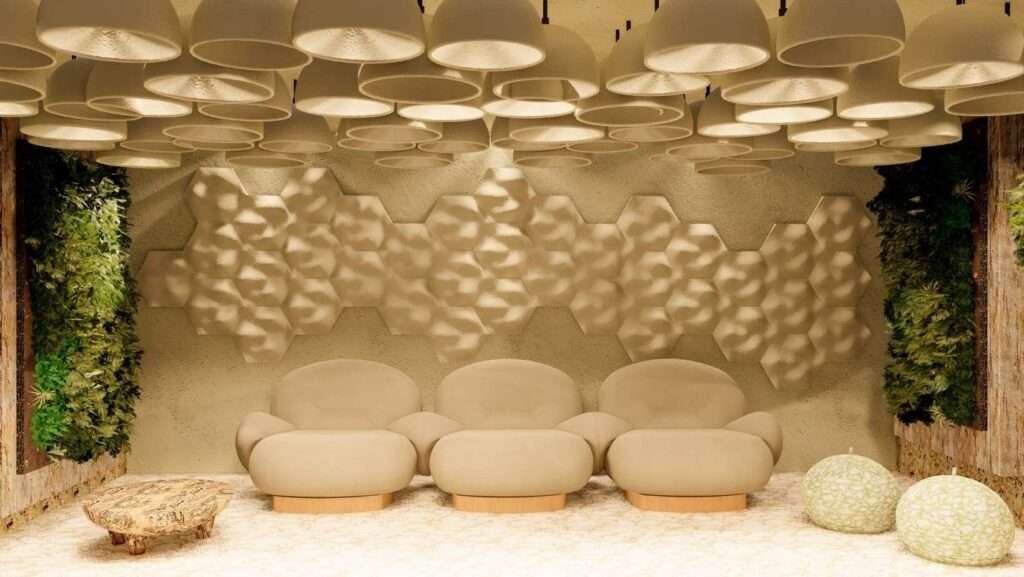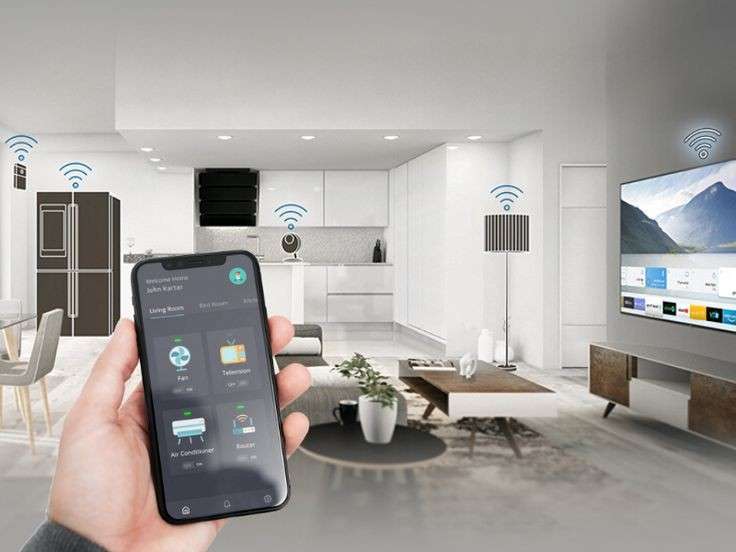In today’s fast-paced world, mental health has become a growing concern, and the spaces we live and work in can significantly influence our well-being. More than just aesthetically pleasing, interior design has the power to affect our mood, productivity, and emotional state. By thoughtfully incorporating design elements that promote calmness and tranquility, we can create spaces that support mental health and enhance overall well-being.
At Scale & Structure, we recognize the importance of designing spaces that foster a peaceful, supportive environment for our clients. In this blog, we’ll explore how interior design can play a crucial role in promoting mental health by creating calming spaces that encourage relaxation, focus, and emotional balance.

The Connection Between Environment and Mental Health
Our surroundings have a profound impact on our emotional state. Whether it’s the clutter in our workspace, the brightness of our living room, or the calming energy of a bedroom, the design of a space directly affects our mental and emotional health. A well-designed environment can reduce stress, increase relaxation, and improve cognitive function, while poorly designed spaces can contribute to feelings of overwhelm, anxiety, or even depression.
Key Ways Interior Design Affects Mental Health:
- Color: The colors in a space can influence our mood. Warm tones may create a sense of comfort, while cool tones can promote relaxation.
- Lighting: Natural light helps regulate our circadian rhythm and contributes to better sleep, while poor lighting can lead to feelings of fatigue or sadness.
- Space Layout: A cluttered, cramped space can cause stress and overwhelm, while an open, organized layout can promote a sense of calm and clarity.
- Textures and Materials: Soft, natural textures can be soothing, while harsh, uncomfortable materials can add to tension and discomfort.
By being mindful of these design elements, Scale & Structure works with clients to create spaces that are not just beautiful but therapeutic.
Key Elements in Creating Calming Spaces
1. The Power of Color
Colors can have a profound effect on our emotions, and choosing the right palette for a space can significantly impact mental health. Soft, neutral shades like pastels, light blues, greens, and soft grays are known to promote relaxation and calmness, while earthy tones like warm browns, soft greens, and terracotta evoke a sense of grounding and connection to nature.
How to Use Color for Calm:
- Blues and Greens: These colors are known for their calming effects, making them ideal for bedrooms, meditation rooms, or offices.
- Earthy Tones: Warm neutrals like beige, tan, and light brown create a cozy, comforting atmosphere and are great for living rooms or personal spaces.
- Soft, Muted Pinks: Light pinks and blush tones promote relaxation and positive energy, which can be beneficial in areas for rest and recovery.
At Scale & Structure, we carefully select colors that align with the function of the space and the mood we want to create, ensuring a calming atmosphere throughout.
2. Natural Light and Airflow
Exposure to natural light has been shown to improve mood and energy levels by boosting serotonin levels and helping regulate our internal body clock. In contrast, poorly lit spaces can contribute to feelings of sadness or anxiety. Large windows, glass doors, and open spaces that allow natural light to flood in can make a world of difference for mental health.
How to Maximize Natural Light:
- Use sheer curtains or blinds that allow sunlight to pour into the space while still providing some privacy.
- Arrange furniture near windows to create a more connected and open feel.
- Consider skylights or glass walls to bring more natural light into spaces that might be otherwise darker, such as bathrooms or kitchens.
Additionally, ensuring proper ventilation and airflow can further contribute to a healthier environment, promoting both physical and mental well-being.
At Scale & Structure, we emphasize the importance of light and air in every design project, ensuring that spaces feel open, bright, and inviting.
3. Minimalism and Organization
Cluttered spaces can create feelings of chaos and stress. A minimalist design with clean lines, organized spaces, and a focus on functionality can help reduce anxiety and promote a sense of peace. Less is often more when it comes to designing spaces for mental well-being.
How to Achieve Minimalism and Organization:
- Choose functional furniture that doubles as storage to reduce visual clutter.
- Keep surfaces clear and tidy by incorporating smart storage solutions like baskets, cabinets, and built-in shelves.
- Use a minimalist color palette to keep the space feeling airy and open.
By designing spaces that are uncluttered and organized, Scale & Structure helps our clients create a sense of calm and order that directly supports mental clarity and relaxation.
4. Incorporating Nature: Biophilic Design
Biophilic design focuses on connecting people with nature by incorporating natural elements into interior spaces. Studies have shown that exposure to nature—whether through indoor plants, natural wood finishes, or views of the outdoors—can reduce stress and increase feelings of happiness and well-being. Bringing nature indoors can be as simple as adding greenery or as complex as creating indoor garden spaces.
How to Integrate Biophilic Design:
- Use indoor plants like succulents, ferns, or snake plants to purify the air and add a calming touch of greenery.
- Incorporate natural materials such as wood, stone, and cotton to create a warm, organic atmosphere.
- Maximize views of outdoor greenery or gardens by arranging furniture to face windows or by adding glass doors leading to outdoor spaces.
At Scale & Structure, we love bringing nature indoors through biophilic design, helping clients create environments that feel connected to the natural world.
5. Soft Textures and Comfort
Soft textures play an important role in creating calming spaces, offering a tactile experience that adds comfort and warmth. Plush rugs, cozy throw blankets, soft cushions, and comfortable seating all contribute to an inviting and relaxing environment.
How to Incorporate Soft Textures:
- Add plush rugs and comfortable seating to living rooms or reading nooks to create a cozy atmosphere.
- Use soft fabrics like cotton, linen, and velvet for cushions, curtains, and upholstery.
- Incorporate tactile materials like wool or knit throw blankets that invite relaxation.
At Scale & Structure, we carefully select fabrics and textures that not only complement the design but also offer a calming, comforting environment that enhances mental well-being.
Designing Calming Spaces for Specific Needs
Different areas of your home or office serve different purposes, and each needs to be designed to support specific mental health goals. Here are a few examples:
- Bedrooms: Since the bedroom is a space for rest and recovery, it should promote relaxation and restful sleep. Use soft, calming colors, comfortable bedding, and limited electronics to create a peaceful sleep environment.
- Home Offices: For home offices, creating a space that promotes focus and reduces stress is key. Use calming colors, natural light, and ergonomic furniture to keep stress levels low while working.
- Living Rooms: Living rooms should be warm and inviting, promoting connection and relaxation. Incorporating soft textures, natural materials, and personalized decor can make these spaces feel more comfortable and relaxing.
At Scale & Structure, we tailor each space to the specific needs and lifestyle of our clients, ensuring that each room is a sanctuary for mental health and well-being.
Conclusion: Designing with Mental Health in Mind
Interior design isn’t just about creating beautiful spaces—it’s about crafting environments that enhance our overall quality of life. By focusing on elements like color, natural light, organization, and biophilic design, we can create calming spaces that promote mental health, reduce stress, and improve well-being.
At Scale & Structure, we are committed to designing spaces that not only look good but also feel good. Our goal is to help you create a home or workspace that fosters relaxation, focus, and emotional balance, enhancing your mental health and overall happiness.



